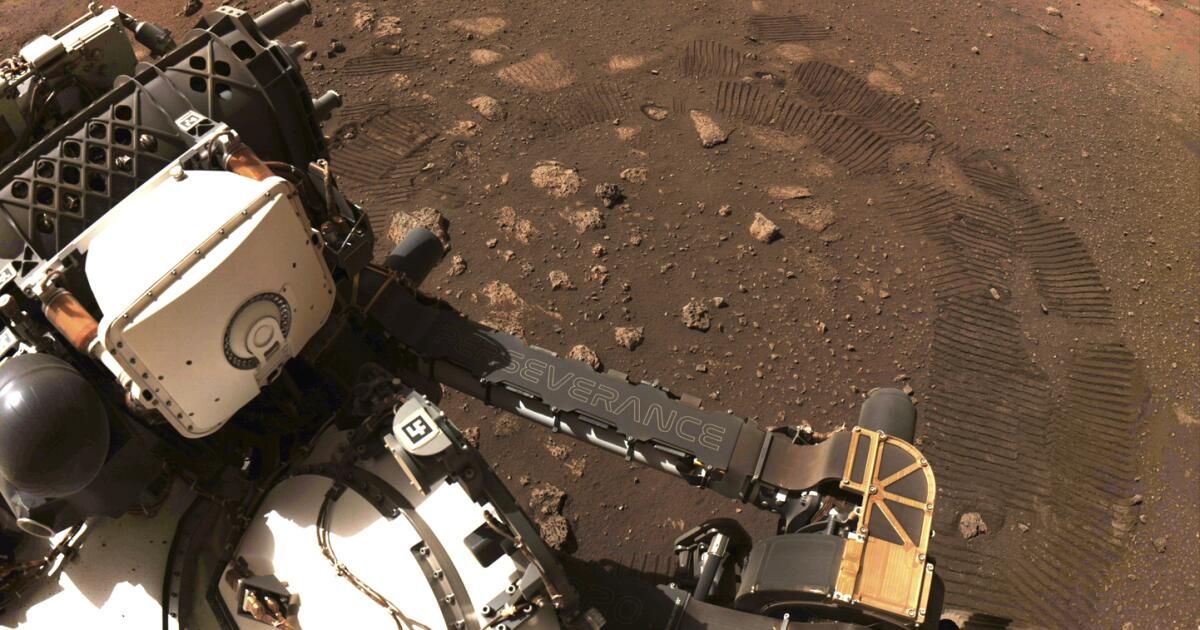NASA does it difficult, inspiring and ambitious things, and he does them, In the immortal words of President Kennedy, because they're hard. NASA's most ambitious planetary project so far is Mars sample return, a partnership with the European Space Agency to robotically collect and bring scientifically invaluable rocks from Mars to Earth to study in laboratories here. But the mission is in trouble.
The Mars sample return represents the culmination of decades of planning by the planetary science community and has been the top scientific priority for the past two Decennial Surveys of the National Academies of Sciences, Engineering and Medicine. The studies are comprehensive reports written by dozens of scientists over many months, designed to help NASA map out its agenda in 10-year increments.
There are compelling reasons to bring samples back from Mars.
The technologies needed to recover soil and rocks from Mars will support those needed for NASA's Moon to Mars initiative, a grand plan to eventually send humans to Mars and bring them home safely. And successfully recovering study samples from Mars would reaffirm America's leadership in robotic space exploration at a time when China is aiming for that same prize.
The samples have the potential to revolutionize our understanding of the Red Planet's geological history and whether it could have ever supported life. They will offer vital information about the environment that Mars astronauts would encounter and give us completely new information about the processes that shape planets in general. Just as scientists have done with Apollo moon samples from 50 years ago, what is collected now can be studied for decades, making use of analytical capabilities yet to be invented and representing a scientific gift that keeps on giving.
The first phase of Mars Sample Return has already begun. In February 2021, the Perseverance rover landed on Mars with the task of collecting air, rock cores and soil that would eventually be returned to Earth. Equipped with a sophisticated sampling system, Perseverance has already filled 23 of its collection tubes and has 15 more.
The next planned phase is to send a sample recovery lander to rendezvous with Perseverance, transfer the samples and then launch them into space, to be collected by a Earth return orbiter provided by ESA.
However, it is far from certain how, when or even if those next phases will occur.
Faced with rising costs, NASA commissioned an independent review of the entire program in 2023. The review he didn't hitfinding that the probable cost of the project had swollen, its organizational structure was not working and that NASA had not effectively communicated to the scientific community and the public why the massive effort was worth it in the first place. Despite that, the review emphasized that the scientific and geopolitical value of Mars Sample Return cannot be overstated and that the project could be made affordable.
Still, the Senate threatened to reduce the project budget substantially and even cancel it completelywhich contrasts markedly with the proposal of the Chamber of support the program fully. Congress is now proposing to fund it at some level, but this uncertainty has led NASA to “return ramp”its activities related to the return of samples from Mars. As a result, the Pasadena Jet Propulsion Laboratory, NASA's lead center for the project, laid off more than 600 staff last month: highly qualified expertise that NASA can no longer access.
Now Congress has a choice: It can turn its back on Mars sample return or commit to funding the boldest robotic planetary science effort humanity has yet undertaken.
The sample project should be put on a financially affordable path as part of NASA's overall US planetary exploration program; Mars sample return cannot come at the expense of all the agency's other planetary science endeavors. Last year, a team began developing a profitable path forward, in response to criticism from the independent review. Their proposals are expected later in March.
But even a streamlined, fiscally sound project of the scale and profitability of Mars Sample Return will require more money than previous planetary missions. That's the nature of doing something that's never been done before.
And let's be clear: abandoning the project would not only sacrifice work already underway, but it would also be a serious blow to the Decadal Study process, harming not only planetary science but other scientific communities that have depended on the Decadal Study process. study to establish scientific and financing bases. priorities dating back to the 1960s.
Congress should fund NASA enough to achieve the generational goal of returning Mars samples to Earth. For a fraction of the country's annual non-defense discretionary spending (or about 5% of what Americans spend on pizza each year. — The United States can set its sights on the Red Planet like never before. By doing so, we can answer fundamental questions in planetary science, strengthen our relationships with our international partners, and inspire the next generation of explorers.
Returning samples from Mars is difficult, but that's not your problem. For NASA and for the United States, it is perhaps the best reason to do it.
Paul Byrne is an associate professor of earth, environmental and planetary sciences at Washington University in St. Louis. Vicky Hamilton is a scientist at the Southwest Research Institute in Boulder, Colorado. Both have dealings with NASA but are not direct employees of the agency.












